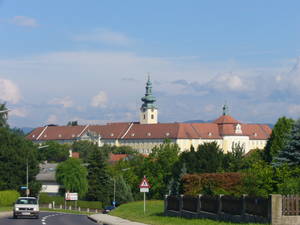Seitenstetten

The town of Seitenstetten, with about 3000 inhabitants, is situated in the Mostviertel (Must or Cider Quarter), the southwestern part of Lower Austria. Historically, the Mostviertel is of special importance as part of the Austrian heartland. The “Ostarrîchi-document” from 996 has preserved the oldest written mention of “Österreich” (Austria), referring to the town of Neuhofen on the Ybbs. The characteristic fruit tree avenues for cider and perry production and the 200 km long “Moststraße” with numerous cultural sights, wine taverns and lookout points attract many tourists every year.
The area of Seitenstetten has a long history. The discoveries of cut flat axes and fragments of earthen vessels are pointing on a neolithic settlement; in Roman times the town belonged to the province of Noricum. In 1480 Seitenstetten was deputised as a market by Emperor Friedrich III.
An important personage coming from Seitenstetten was the internationally acknowledged jurist Heinrich Lammasch (1853-1920). He was the last prime minister of the imperatorial-royal Austria and as convinced pacifist an early supporter of the political neutrality of Austria.
The most famous sight of Seitenstetten is the Benedictine monastery, which was founded in 1112 and obtained its today baroque shape (“Vierkanter Gottes”) in the years 1718–1747.
Sources:
www.seitenstetten.gv.at;
http://de.wikipedia.org/wiki/Seitenstetten
Image source:
http://commons.wikimedia.org/wiki/File:Seitenstetten_ferne.jpg





